Early life
| | This section is empty. You can help by adding to it. (September 2023) |
| Fateh Khan Barakzai فتح الله خان بارکزی | |
|---|---|
| Wazir | |
| Wazirs of the Durrani Empire | |
| Predecessor | Wafadar Khan |
| Successor | Mukhtar ad-Daula (1803) Akram Khan (1809) Civil war (1818) |
| Head of House of Barakzai | |
| Born | 1777 Kandahar, Durrani Empire |
| Died | August 1818 Herat or Ghazni, Durrani Empire |
| House | Musahiban |
| Dynasty | Barakzai dynasty |
| Father | Sardar Payinda Muhammad Khan |
| Religion | Sunni Islam |
| Military career | |
| Battles/wars | |
Fateh Khan Barakzai or Wazir Fateh Khan or simply, Fateh Khan, was Wazir of the Durrani Empire during the reign of Mahmud Shah Durrani until his torture and execution at the hands of Kamran Shah Durrani, the son of the ruler of the Durrani Empire, and Mahmud Shah Durrani, and other prominent conspirators such as Ata Mohammad Khan. [1] [2] [3] Fateh Khan was of the Barakzai tribe, and his death led to his tribe revolting and the eventual deposition of Mahmud Shah Durrani. [4] [5]
| | This section is empty. You can help by adding to it. (September 2023) |
Zaman Shah Durrani ushered through an era of prosperity not seen for a while within the Durrani Empire, however all was not good, with the Barakzais chiefs then planning for the topple of Zaman Shah, they had laid the constituent articles that Zaman Shah should be overthrown and replaced by his brother, Sujah Mirza, the Durrani crown should be elective, with the chiefs confirming the next rulers, as well as that the kings who have been proven unworthy can be deposed by the chiefs. [6]
Wafadar Khan, the then Wazir of the Durrani Empire under the rule of Zaman Shah Durrani began suspecting a plot was formulating on Zaman Shah, and discovered a plot where Payindah Khan Barakzai, Azim Khan Alakozai, the head of the Jawanshir Qizilbash, and numerous other prominent chiefs. [7] Wafadar Khan then informed Zaman Shah of what had come, where he fabricated witnesses to the event, while Payindah Khan's sons claimed Wafadar Khan was attempting to bring the fall of the Barakzai. [8]
Nonetheless, Payindah Khan and other conspirators were rounded up and executed, with their heads being displayed publicly in Kandahar. [8] This execution brought dire consequences, such as the alliance between the Durranis and the Barakzais which was now broken. [8] As a result, Fateh Khan, who was the eldest of Payindah Khan's children, fled to Persia where Mahmud Shah Durrani was in exile, and swore his allegiance to him. As Zaman Shah became tied down in the Punjab for his campaigns, Mahmud Shah and Fateh Khan rallied and left for Grishk, raising a force to march on Kandahar. [8] The situation worsened when Zaman Shah executed the Durrani governor of Kashmir after promising safe conduct. Upon hearing this, his brother, Saidal Khan, opened the gates of Kandahar to Mahmud Shah's force. [8] With the fall of Kandahar, Mahmud Shah marched on Ghazni, and the two armies of Zaman Shah and Fateh Khan met at Muqur. Before the battle even began, several prominent Sardars defected from Zaman Shah to the cause of Shah Mahmud, leading to Zaman Shah's army being dissolved in panic. [8] With this, Mahmud Shah and Fateh Khan marched on Kabul, seizing it and establishing Shah Mahmud as the new ruler. Wafadar Khan would be executed by Fateh Khan himself. [8]
Zaman Shah escaped out of Kabul and took refuge at Rawalpindi where he was met by Ranjit Singh who gave him a house to stay in but later due to his safety concerns, Ranjit Singh welcomed him to stay in Lahore, with a monthly allowance of 1,500 rupees. Later, from Lahore, Zaman Shah moved to Ludhiana where he lived for the rest of his life. [9]
Shah Shuja Durrani began his attempt for the throne of the Durrani Empire, and successfully defeated Mahmud Shah on 12 July 1803. Following this, Shah Shuja entered Kabul and established his rule there. [10] Zaman Shah then sent Qaizar Mirza to Kandahar, where Fateh Khan and Kamran Shah Durrani resided. During this, Fateh Khan held negotiations with Qaizar Mirza and established terms for him to cede Kandahar. As a result, he opened the gates of Kandahar while Kamran Shah left for Herat. [11] However when Fateh Khan arrived in Kabul to pledge allegiance in person to Shah Shuja, the deal they established was not upheld, leaving Fateh Khan discontent. [11]
As a result, the Autumn of 1803, where usually Shah Shuja left for Peshawar to spend the winter there, he had freed numerous princes from the Bala Hissar and encouraged Qaizar Mirza to join this growing rebellion. When Shah Shuja sent a force against Qaizar, he surrendered and begged for mercy, to which he was pardoned and his position as the governor of Kandahar was affirmed. [11] Fateh Khan then attempted to flee to Herat, but returned after its governor pledged allegiance to Shah Shuja, leading to Fateh Khan being imprisoned in Kandahar by Qaizar. [11] Despite this, he convinced Qaizar to free him, leading to Fateh Khan fleeing to Grishk, where he raised a force with Kamran Shah, and they collectively marched on Kandahar. However, as the battle neared, Fateh Khan defected and the forces of Qaizar and Fateh Khan defeated Kamran Shah, Despite this, the alliance did not last long, and Fateh Khan again defected back to Kamran Shah, collectively uniting their forces under Firoz-al-Din, Kamran Shah, and Fateh Khan. However Firoz-al-Din fled before completing the campaign due to a Qajar invasion. [11]
As the Persians invaded Herat, Mukhtar al-Daula, the Wazir of Shah Shuja, alongside Khwaja Khanji had placed Qaizar on the throne, with his firm support in Kandahar. Fateh Khan as well joined this revolt and pledged allegiance to Shah Qaizar. Despite this, on 3 March 1808, the rebellion was shattered at a battle outside of Peshawar. Numerous leaders were captured, and some impaled such as Mukhtar al-Daula. [12] Following this, Qaizar Shah fled to Kohistan while Mahmud Shah reached Kandahar, joining forces with Fateh Khan. Shah Shuja defeated the coalition of Mahmud and Fateh Khan at Qalati Ghilji but did not follow up with this victory, and returned to Peshawar. [12] Shah Shuja attempted to re-conquer Kashmir, which was in a rebellious state, but his army was slaughtered attempting to do so. As a result, Mahmud Shah and Fateh Khan re-cooperated and Shah Shuja left Peshawar for Jalalabad in June 1809. [13] The two armies met at the battle of Nimla, where Shah Shuja was decisively defeated. [14]
With this victory, Fateh Khan was reinstated in his position as Wazir of the Durrani Empire. [15] Fateh Khan began consolidating power under him and his tribe and close family by deposing governors and then handing out Jagirs to his half brothers such as the Dil brothers. [15] Fateh Khan attempted campaigning against the Sikhs but was defeated at the battle of Attock. [15] Fateh Khan and Mahmud Shah also campaigned against Kashmir. However during this period of campaigning, rebels placed Abbas Mirza, a son of Timur Shah Durrani on the throne. [15] Many of the Qizilbash leaders in Shah Mahmud's army fled for their lives following the news of this coup, and Fateh Khan and Shah Mahmud had no choice but to abandon the campaign thus far and return to Kabul, where the rebellion was quelled. [16]
Khwaja Khanji fled to his positions of power in Kohistan. Months later, Dost Mohammad Khan entered the region with an army of Qizilbash, and began laying waste to the surrounding countryside from his base at Charikar. Dost Mohammad razed many regions including Tagab, the Koh Daman, and Kohistan. [17] Despite this, Khwaja Khanji refused to surrender. Dost Mohammad resorted to intrigue, and promised a royal pardon. After luring him and his family, Khwaja Khanji was beheaded alongside numerous other leaders of Kohistan. [17]
During this period of time, the Emirate of Herat had declared independence from the rule of Mahmud Shah. [18] [19] As a result, Fateh Khan sought to bring the region back under Durrani suzerainty, and launched a campaign as ordered by Mahmud Shah. [20] Fateh Khan, alongside his brother, Dost Mohammad Khan, arrived at Herat by the end of April. [17]
Fateh Khan then led a ploy where he tricked the ruler of Herat, Firoz al-Din, and entered the city. Fateh Khan arrested Firoz, and began consolidating power, while also sacking the city. [17] During this period of chaos, the harem of the ruler was also infiltrated, leading to seizure of jewels and raping of women. [17] [5] Amongst the victims was Mahmud Shah's daughter, [21] or niece. [5] As a result, Kamran Shah Durrani swore revenge, but Dost Mohammad fled before any retaliation could be taken. [21]

With rule in Herat, Fateh Khan displaced the Persian ambassadors and forcing them to return to Persia. This sparked paranoia by Mahmud Shah, who believed that this would be used as a casus belli to invade. Mahmud Shah also used this as a pretext to weaken Barakzai power, who were gaining rapid influence and high positions throughout the empire. [20] [22] As a result, Kamran Shah was dispatched to Herat. During this, the Qajar governor of Khorasan dispatched forces under Dowlatshah to re-capture Herat. The two armies met at the battle of Kafir Qala, which ended inconclusively, with the Qajar army returning to Mashhad, and the Afghan army to Herat. [21]
After the Afghan army returned to Herat, the letter under Kamran arrived. The letter demanded that Fateh Khan give up the city, and dismissed him from his position as Wazir. [21] According to Jonathan Lee, Fateh Khan remarked:
"I twice placed Mahmud on the throne ... and his Kingdom is now in the hands of my kinsmen; who is Kamraun therefore, that in a dream he should think of injuring me." [21]
With this response, Kamran Shah began plotting and held a meal for Fateh Khan, claiming he wished to celebrate their victory in the capture of Herat. [21] Different accounts are given.
According to Jonathan Lee, Fateh Khan was warned by his advisers against attending. Fateh Khan attended and found all of his sworn enemies. Nonetheless, Fateh Khan participated in the celebration and began eating with the guests. However as it progressed, the different enemies began berating him with insults and informing him of the crimes his family had committed. As Fateh Khan had enough, he rose in anger and wished to leave. However, the guests all grabbed and pinned him. With this, Ata Muhammad Khan then blinded Fateh Khan with his dagger. Fateh Khan was then imprisoned, and in the following days, his eyes were removed. [23]
According to the account of Dalrymple, Fateh Khan was invited to a party in the royal garden outside the fortress of Herat. Fateh Khan and some of his brothers attended, and they became intoxicated after drinking much wine. Kamran then capitalized off of this, and having planned for this to happen, the other guests of the event tied up Fateh Khan and blinded him. [5] Following his blinding, Fateh Khan was then tortured, with a scalping occurring. [5]
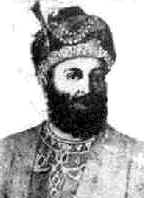
Jonathan Lee and Dalrymple differ on the accounts of execution as well.
According to Jonathan Lee, after Fateh Khan was held imprisoned for many months, he was taken to Ghazni to be held under trial by Mahmud Shah, and numerous of his enemies. Mahmud Shah promised to spare Fateh Khan's life on the demand that his brothers came in person and swore their loyalty to Mahmud Shah. Despite this, Fateh Khan rejected, believing that his brothers would ultimately be punished and tortured as he had been. As a result, Shah Mahmud struck Fateh Khan with his sword, and then other enemies began cutting off the limbs of Fateh Khan. After a while, Mahmud Shah decapitated Fateh Khan, with the maimed remains of Fateh Khan being rolled up in a carpet and buried. [24]
According to Dalrymple, Fateh Khan was later led into a tent where multiple of his enemies were. Fateh Khan was demanded to write to Dost Mohammad Khan, and was demanded for him to lay down conflict against the Durranis. Fateh Khan refused this. His enemies, unsatisfied of this response, began mutilating him, hacking off pieces of his body. Fateh Khan's ears, nose, hands were cut off, and did not hold any complaints until his beard was cut, which he then began crying. After more torture including both his feet being cut off, Ata Muhammad Khan slit the throat of Fateh Khan, killing him. [5]
This event happened in August 1818. [25] The consequences that followed were disastrous for Mahmud Shah. The many Barakzai governors, who held high positions throughout the country and different provinces now revolted having heard of this, and they now plotted to overthrow the Durrani dynasty in its entirety. This would lead to the overthrow of Mahmud Shah Durrani in 1818, and the fragmentation of the Durrani Empire and the state of Afghanistan until its eventual reunification under Dost Mohammad Khan under the Emirate of Afghanistan in his last campaign in 1863. [24] [26]
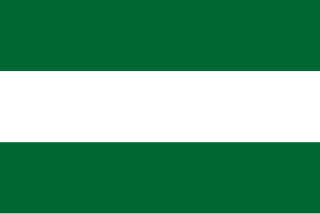
The Durrani Empire or the Afghan Empire, also known as the Sadozai Kingdom, was an Afghan empire that was founded by Durrani tribe of Pashtuns, under the Ahmad Shah Durrani in 1747, that spanned parts of Central Asia, the Iranian plateau, and the Indian subcontinent. At its peak, it ruled over the present-day Afghanistan, much of Pakistan, parts of northeastern and southeastern Iran, eastern Turkmenistan, and northwestern India. Next to the Ottoman Empire, the Durrani Empire is considered to be among the most significant Islamic empires of the second half of the 18th century.

European influence in Afghanistan has been present in the country since the Victorian era, when the competing imperial powers of Britain and Russia contested for control over Afghanistan as part of the Great Game.

Emir Dost Mohammad Khan Barakzai, nicknamed the Amir-i Kabir, was the founder of the Barakzai dynasty and one of the prominent rulers of Afghanistan during the First Anglo-Afghan War. With the decline of the Durrani dynasty, he became the Emir of Afghanistan in 1826. An ethnic Pashtun, he belonged to the Barakzai tribe. He was the 11th son of Payendah Khan, chief of the Barakzai Pashtuns, who was killed in 1799 by King Zaman Shah Durrani.

The First Anglo-Afghan War was fought between the British Empire and the Emirate of Kabul from 1838 to 1842. The British initially successfully invaded the country taking sides in a succession dispute between emir Dost Mohammad Khan (Barakzai) and former King Shah Shujah (Durrani), whom they reinstalled upon occupying Kabul in August 1839. The main British Indian force occupied Kabul and endured harsh winters. The force and its camp followers were almost completely massacred during the 1842 retreat from Kabul.
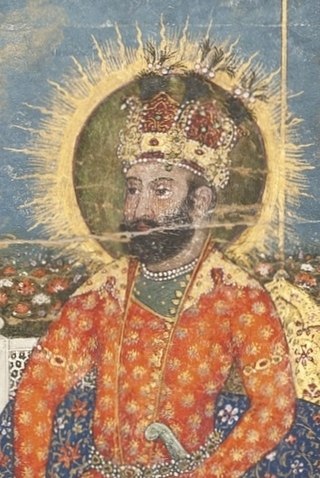
Zaman Shah Durrani, or Zaman Shah Abdali, was the third King of the Durrani Empire from 1793 until 1801. An ethnic Pashtun of the Sadozai clan, Zaman Shah was the grandson of Ahmad Shah Durrani and the fifth son of Timur Shah Durrani.

Mahmud Shah Durrani ; 1769 – 18 April 1829) was born prince and later ruler of the Durrani Empire (Afghanistan) between 1801 and 1803, and again between 1809 and 1818. From 1818 to 1829 he was the ruler of Herat. An ethnic Sadduzai tribe section of the Popalzai sub clan of the Durrani Pashtuns, he was the son of Timur Shah Durrani and grandson of Ahmad Shah Durrani.

Sardar Mohammad Azim Khan Barakzai was a Pashtun noble who served as Afghan governor of Kashmir (1812–1819). He was the second son of the Barakzai chief Payinda Sarfaraz Khan, while his elder brother Fateh Khan was kingmaker and Vizier to Mahmud Shah Durrani. He was one of 21 brothers from eight mothers including his half-brother Dost Mohammad Khan who would later become Emir of Afghanistan.

Alakozai is a Pashtun tribe in Afghanistan. They are one of the four tribes of the Zirak tribal confederacy of Durrani Pashtuns.
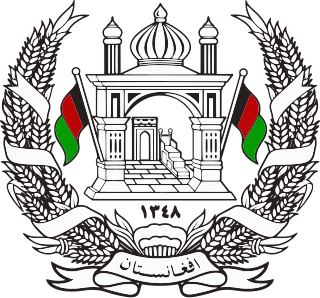
The Barakzai dynasty also known as the Muhammadzai dynasty ruled modern day Afghanistan from 1823 to 1978 when the monarchy ended de jure under Musahiban Mohammad Zahir Shah and de facto under his cousin Sardar Mohammad Daoud Khan. The Barakzai dynasty was established by Dost Mohammad Khan after the Durrani dynasty of Ahmad Shah Durrani was removed from power. The Muhammadzai era was known for its progressivist modernity in which Afghanistan was referred to as the "Switzerland of Asia".

Kamran Shah Durrani, was born in the Sadozai dynasty of Afghanistan. He was the son of Mahmud Shah Durrani, grandson of Timur Shah Durrani and the great grandson of Ahmad Shah Durrani, the founder of the Durrani Empire. He was deposed and killed in early 1842, by his vizier Yar Muhammad Khan Alakozai.

The Battle of Attock took place on 13 July 1813 between the Sikh Empire and the Durrani Empire. The battle was the first significant Sikh victory over the Durranis.

The Afghan–Sikh wars spanned from 1748 to 1837 in the Indian subcontinent, and saw multiple phases of fighting between the Durrani Empire and the Sikh Empire, mainly in and around Punjab region. The conflict's origins stemmed from the days of the Dal Khalsa, and continued after the Emirate of Kabul succeeded the Durrani Empire.

Bārakzai is the name of a Pashtun tribe from present-day, Kandahar, Afghanistan. '"Barakzai" is a common name among the Pashtuns and it means "son of Barak" in Pashto. According to the Encyclopædia Iranica, "In the detailed Pashtun genealogies there are no fewer than seven instances of the ethnic name Bārakzī, at very different levels of tribal segmentation. Six of them designate simple lineages within six different tribes located in the Solaymān mountains or adjacent lands... The seventh instance, on the other hand, designates one of the most important Pashtun tribes in numbers and historic role, part of the Zīrak branch of the Dorrānay confederation.
Mir Masjidi Khan is one of many celebrated Afghan resistance leaders from Shamali Plain who opposed the installation of Shuja Shah Durrani as Emir of Afghanistan by the Government of British India during the First Anglo-Afghan War. He kept up a fierce struggle against the occupation forces in and around Kabul and Northern Afghanistan, until his death.
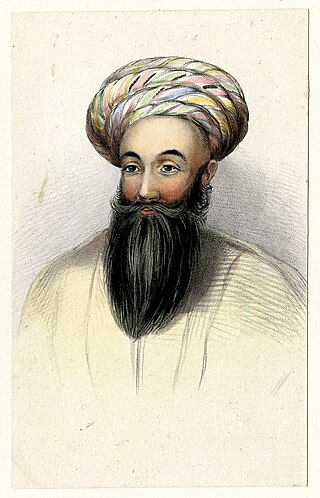
Shah Shuja Durrani was ruler of the Durrani Empire from 1803 to 1809. He then ruled from 1839 until his death in 1842. Son of Timur Shah Durrani, Shuja Shah was of the Sadduzai line of the Abdali group of ethnic Pashtuns. He became the fifth King of the Durrani Empire.

The Principality of Herat, the Emirate of Herat, the Herat Khanate or simply Herat was a state in Afghanistan from 1793 to 1863, and one of the 3 main khanates in 19th century Afghanistan.
The Battle of Nimla took place between June–July 1809, due to a conflict between Mahmud Shah Durrani and Shah Shuja Durrani over the succession for the Durrani throne. The battle resulted in a victory for Mahmud Shah and allowed him to secure the throne, where he reigned from 1809 to 1818. This was his second reign before he was deposed.
The Parwan Campaign took place from October–November 1840, as a result of Dost Mohammad Khan's rebellion against Shah Shuja and the British backed regime. The Parwan campaign had over 13 different clashes, and ended in an Afghan victory, with Robert Sale forced to abandon the campaign and return to Kabul.
The Expedition of Shuja ul-Mulk began in January 1833, whilst the siege of Kandahar began on 10 May 1834, and ended on 1 July 1834. The expedition was led by Shah Shuja Durrani, the deposed Afghan Emperor who wished to re-claim his throne. Shah Shuja rallied forces while in exile in the Sikh Empire and marched through Sindh to Kandahar, besieging it. Shah Shuja would be defeated by the Barakzai rulers of Kandahar and Kabul.
Dost Mohammad's Campaign to Jalalabad (1834) took place in Early 1834, prior to the summer invasion of Shah Shuja Durrani in Kandahar. Dost Mohammad Khan wished to raise troops and subjugate the regions around Jalalabad, which was ruled by many different polities, one of the most significant being Mohammad Zaman Khan, who was centred in Jalalabad. This invasion from Dost Mohammad would be opposed by the rulers of Kunar, and the Mohmand tribe.